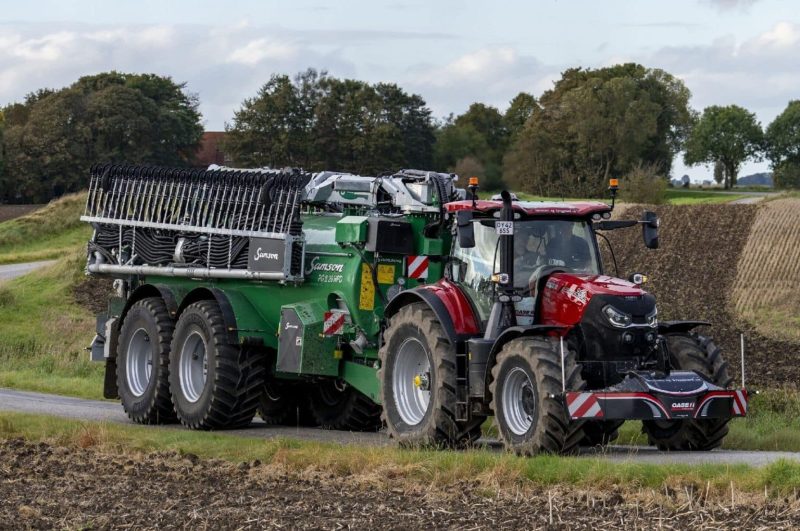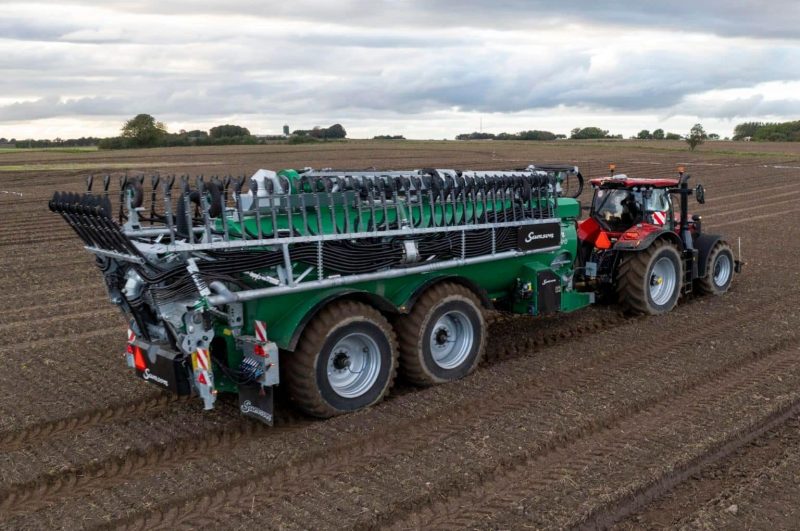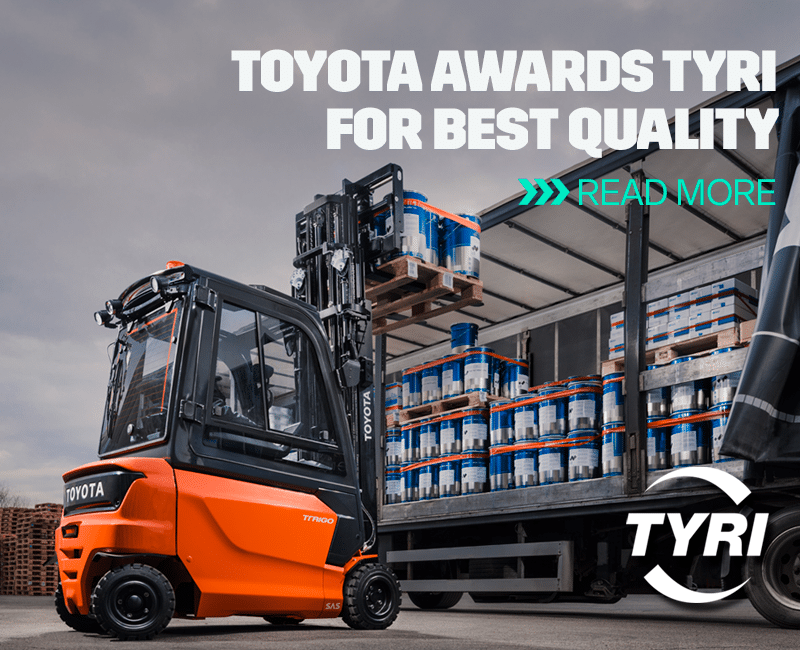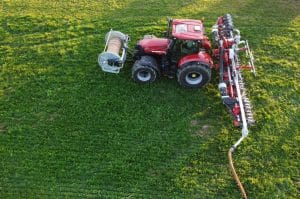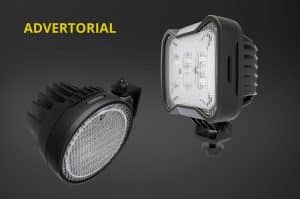Samson Agro and Apollo Tyres conducted an in-depth tyre test in the Viborg area of Denmark, to explore ways to enhance the efficiency of organic fertilizer handling. This study examined five different sizes of Vredestein slurry tanker tyres, evaluating their impact on fuel consumption, soil compaction, and overall performance under both field and road conditions.
The test was carried out with a Case IH Puma 260 CVX tractor with the Samson PG II Genesis tandem axle slurry tanker and the following tyres:
– Vredestein Flotation Trac 650/55 R26.5
– Vredestein Flotation Trac 750/60 R30.5 (reference tyre)
– Vredestein Flotation Optimall VF 750/60 R30.5
– Vredestein Flotation Trac 800/60 R32
– Vredestein Flotation Trac 800/60 R38
Diameter effect
The results in the field indicate that upgrading from the smallest Vredestein tyre to the biggest provides substantial gains, with notable improvements in fuel efficiency and reduced soil compaction. Fuel savings of up to 14% were achieved with the largest tyre compared to the reference tyre. Wheel slip reduced significantly (up to 30%) from the smallest tyre to the biggest, although the benefits level-off between the larger sizes. The increased footprint of the larger tyre distributes the tyre load more evenly across the soil, resulting in a soil contact pressure of less than 1.0 bar, which helps to reduce soil compaction and protect the land.
VF vs non-VF
Fuel savings in the field are further strengthened when VF technology is applied, enabling the tyre to adapt flexibly to varying loads and terrain. Fuel savings up to 8% were achieved with the Vredestein Flotation Optimall VF 750/60R30.5 compared to the non-VF reference tyre of the same dimension.
For operations with substantial road travel, the test showed small differences in fuel use. However, the Vredestein Flotation Optimall VF tyre turned out to be the most economical in the tests.
Inflation pressure regulation
The test also highlighted the added benefits of tyre pressure regulation using a central tyre inflation system (CTIS), which adjusts pressure between fieldwork and on-road transport to ensure optimal tyre performance. This feature not only enhances soil protection, but also significantly reduces fuel usage, by up to 10%. Additionally, equipping the slurry tanker with wheel drive significantly minimized track depth up to 16% and reducing soil compaction.
In conclusion, the results emphasize the value of choosing the appropriate tyre. VF technology, wheel drive, and tyre pressure regulation systems further optimize the tyre performance. Wheels with a small diameter can be advantageous with a lot of road transport. Whereas wheels with a large diameter are most advantageous in the field or work with short road transport. These solutions offer clear advantages for both cost efficiency and sustainability, helping farmers and contractors maximise machine performance and avoid soil compaction of valuable farmland.



